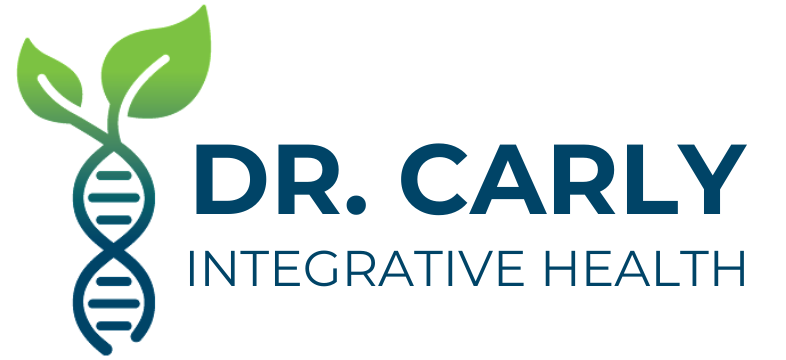The Small Intestine Microbiome in Hydrogen SIBO
Small intestine bacterial overgrowth (SIBO) is an overgrowth of bacteria in the small intestine. In up to 2/3 of patients diagnosed with IBS, SIBO is actually causing their bloating, abdominal pain, and abnormal bowel movements. While we have been researching SIBO for the last few decades, it has not been until recently that researchers have been able to clearly elucidate the microbiome of the SIBO patient.
This may pave the way for new therapeutics and a personalized approach for SIBO. Currently, the standard therapeutics include rifaximin, berberine, the elemental diet and some other antibiotics and herbs. However, if you are a clinician with experience treating SIBO or a patient with a tough to treat SIBO case, you know that the standard SIBO protocols do not work for everyone. New therapeutics and customized treatments may provide a breakthrough for those tough cases.
HYDROGEN SIBO Microbes
Previous research using culture techniques found a variety a bacteria in patients with SIBO: Streptococcus, Escherichia coli, Staphylococcus, Micrococcus, Klebsiella, Proteus, Lactobacillus, Bacteroides, Clostridium, Veillonella, Fusobacterium, and Peptostreptococcus (1). However, culture has many limitations. First, it is not have the capacity to identify all species accurately. And second, cultures from small intestine aspirates are often contaminated by the oral microbiome.
Dr. Mark Pimentel has been able to validate a small intestine sample collection method to accurately analyze the microbiome using 16S rRNA sequencing, which allows identification of all bacteria. It turns out that the small intestine microbiome of SIBO patients is not just overgrown (more than 10^3 CFU/mL), but also dysbiotic. There is less diversity in the SIBO microbiome and an overgrowth of one particular group of bacteria: Proteobacteria. In SIBO patients, Proteobacteria was more than 3 times higher than non-SIBO patients. SIBO patients also had less Firmicutes, which can include beneficial bacteria like Lactobacillus and butyrate producers. The specific Proteobacteria that are overgrown include Klebseilla, Escherichia/Shigella, Acinetobacter and some unknown genera. Klebseilla and Escherichia/Shigella may be more correlated with bloating. (2)
MIcrobe specific treatments
The good news is that this data does confirm that the standard treatments of rifaximin and berberine are good therapeutic tools for SIBO. Berberine is an excellent tool for Klebseilla and Escherichia/Shigella (3). This also confirms a secondary herb, neem, as a good therapeutic tool (4). Most aromatic herbs like rosemary, thyme, and oregano may also be helpful. Polyphenols such as rutin, hesperidin, luteolin, quercetin, and resveratrol may be able to additional therapeutic options that require study (5). Polyphenols may also address the dysbiosis by supporting diversity and Firmicutes in the small intestine. However, research is needed to demonstrate that they would reduce the total bacterial load in the small intestine to less than 10^3 CFU/mL (diagnostic cut off for SIBO).
SIBO Tests
Most of you will be wondering how you can test your small intestine microbiome in order to personalize your SIBO treatment. And you can’t…yet. This testing is only being used in research and not in clinical practice. The lactulose breath test can only indirectly detect the presence of elevated bacteria. It cannot identify the bacteria. And organic acid urine testing and stool testing cannot tell you anything about the small intestine microbiome. I see many practitioners talking about using these tests to diagnose SIBO and that is completely inaccurate. Dr. Pimentel would not have needed to validate a duodenal aspirate collection method if this was the case.
Refences
Bouhnik Y, Alain S, Attar A, Flourié B, Raskine L, Sanson-Le Pors MJ, Rambaud JC. Bacterial populations contaminating the upper gut in patients with small intestinal bacterial overgrowth syndrome. Am J Gastroenterol. 1999 May;94(5):1327-31. doi: 10.1111/j.1572-0241.1999.01016.x. PMID: 10235214.
Leite G, Morales W, Weitsman S, Celly S, Parodi G, Mathur R, Barlow GM, Sedighi R, Millan MJV, Rezaie A, Pimentel M. The duodenal microbiome is altered in small intestinal bacterial overgrowth. PLoS One. 2020 Jul 9;15(7):e0234906. doi: 10.1371/journal.pone.0234906. PMID: 32645011; PMCID: PMC7347122.
Zhang L, Wu X, Yang R, et al. Effects of Berberine on the Gastrointestinal Microbiota. Frontiers in Cellular and Infection Microbiology. 2021;10. Accessed December 21, 2022. https://www.frontiersin.org/articles/10.3389/fcimb.2020.588517
Banna QR, Parveen F, Iqbal MJ. Growth inhibitory effect of ethanolic neem leaves extract on Klebsiella, Salmonella and Staphylococcus aureus. Bangladesh Journal of Pharmacology. 2014;9(3):347-350. doi:10.3329/bjp.v9i3.19454
Wang Z, Ding Z, Li Z, Ding Y, Jiang F, Liu J. Antioxidant and antibacterial study of 10 flavonoids revealed rutin as a potential antibiofilm agent in Klebsiella pneumoniae strains isolated from hospitalized patients. Microb Pathog. 2021 Oct;159:105121. doi: 10.1016/j.micpath.2021.105121. Epub 2021 Jul 31. PMID: 34343655.


